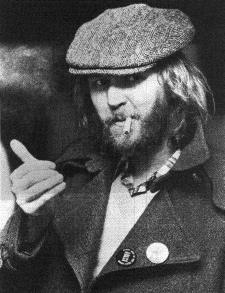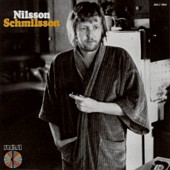- Home
- Introduction, Update Information, Links
- The Super Seventies "Classic 500"
- Readers' Favorite Seventies Albums
- Seventies Single Spotlight
- The Top 100 Seventies Singles
- Favorite Seventies Artists In The News
- Seventies Almanac - Year By Year
- Seventies Singles - Month By Month
- Seventies Albums - Month By Month
- Seventies Daily Music Chronicle
- Seventies Superstars In Their Own Words
- The Super Seventies Archives
- Seventies Trivia Quizzes & Games
- Seventies MIDI Jukebox
- The Super Seventies Bookstore
- The Super Seventies Photo Gallery
- Seventies' Greatest Album Covers
- Popular Seventies Movies & TV
- Seventies Celebrity Portrait Gallery
- Seventies Lyrics Hit Parade
- Top Seventies Artist Music Videos
- Seventies Usenet Music Forums
- Seventies Smiley Calendar
- EXTRA!
- Superseventies.com Facebook Page
- Superseventies.com Reddit Discussions
- The Super Seventies Blog
- Tweet The Seventies
- RockSite InfoBank
- Beatlefan Site
- Thanks For Your Support! / Top Sellers
- Search The Rock Site/ The Web
![]()
![]()
![]()
![]()
"Without You"
Nilsson
RCA 0604

![]() arry Edward Nilsson was born in Bushwick, a tough neighborhood in Brooklyn, New York. In the early fifties, his family moved to California, where Harry began to get into rock music. After high school, he started work as a computer supervisor at the First National Bank of Van Nuys. In his free time, he wrote songs, came up with commercial jingles, and sang demos for music publishers. Once his voice was heard, off camera, singing on an episode of the sixties television series "I Spy."
arry Edward Nilsson was born in Bushwick, a tough neighborhood in Brooklyn, New York. In the early fifties, his family moved to California, where Harry began to get into rock music. After high school, he started work as a computer supervisor at the First National Bank of Van Nuys. In his free time, he wrote songs, came up with commercial jingles, and sang demos for music publishers. Once his voice was heard, off camera, singing on an episode of the sixties television series "I Spy."
He got his first real break from producer Phil Spector, who had the Ronettes record two Nilsson songs. After that, other artists began to use his material, including the Turtles, the Yardbirds, Blood, Sweat and Tears, Rick Nelson, Lulu, Herb Alpert, Glen Campbell, the New Christy Minstrels, Jack Jones, and Harry Belafonte. One day, after hearing the Monkees sing his "Cuddly Toy" on the radio, Nilsson decided to make music his full-time occupation.
In 1967, he signed with RCA and put out the album Pandemonium Shadow Show. It used twenty voices, all his, and featured "You Can't Do That," an eleven-song montage of Beatles tunes. John Lennon heard it and immediately called Nilsson his "favorite American singer."
His second album was Aerial Ballet, titled after his grandparents' turn-of-the-century circus act. On it was "Everybody's Talkin'," which became his first hit in the fall of 1969. The song, written by Fred Neil, was used on the soundtrack of Midnight Cowboy. Nilsson had also written a tune for the movie, but it was rejected by the film's producers. Instead, Nilsson released it as a follow-up single, and "I Guess the Lord Must Be in New York City" became his second hit.
THE TOP FIVE
Week of February 19, 1972
1. Without You
Nilsson
2. Let's Stay Together
Al Green
3. Hurting Each Other
Carpenters
4. Precious and Few
Climax
5. Never Been To Spain
Three Dog Night
In 1971, Nilsson wrote the story and songs for an animated TV special, "The Point." It was the story of Oblio, a little boy banished to the Pointless Forest because his round head made him different. From that soundtrack came Nilsson's third hit, "Me and My Arrow," which was later rewritten into a TV commercial for Plymouth Arrow automobiles.
And then came the big time -- Nilsson's first number-one record. He ventured to England for a whole new tone and feel to his music, and met up with producer Richard Perry. The two began to map out an album, which came to be known as Nilsson Schmilsson. Almost immediately, Richard came up with the first song -- a tune he'd found on the Badfinger album No Dice. Group members Pete Ham and Tom Evans had written "Without You," and Richard was certain it would be an excellent tune for Nilsson to record. Harry wasn't quite so sure, and it wasn't until the middle of their sessions that he agreed to give it a try.
"It was a different record for its time," Richard recalled. "It was a big ballad with a heavy backbeat, and although many artists have cut songs like it since, no one was doing it then. It has a very romantic feel, and you know who was playing piano on that? It was Gary Wright, and that was years before he hit it big with 'Dream Weaver.'"
|
|
|---|
| Buy from CD Universe Search on Alibris |
That album also produced Nilsson's next couple of hits, "Jump into the Fire," and "Coconut," both in 1972. Later in the year, Nilsson had another hit, "Spaceman," on which he was joined for the first time by Ringo Starr. In 1974, Ringo and Nilsson made a movie together, Son Of Dracula, which featured "Without You," "Jump into the Fire," and a new hit single, "Daybreak," and then Nilsson became John Lennon's companion during the ex-Beatle's separation from his wife, Yoko Ono. During this time the two recorded Pussy Cats, an album of old rock & roll songs. Nilsson faded from the recording scene during the eighties, straightened out, started a family, and pursued business interests, which included a Hollywood-based film distribution company. After Lennon's murder, Nilsson became a gun-control advocate, and made a low-key return to recording with 1988's A Touch More Schmilsson in the Night, on which he sang such pop standards as "Over the Rainbow" and "It's Only a Paper Moon."
In 1993, Nilsson suffered a heart attack, which inspired him to begin writing and recording again in earnest, even though he had no contract. Just a few days after finishing a new album, he died of heart disease at age 52, leaving behind a wife and seven children. The 1995 tribute album For the Love of Harry: Everybody Sings Nilsson featured Randy Newman, Brian Wilson, Adrian Belew, Joe Ely, and others.
With his three-octave vocal range, the late Harry Nilsson displayed an amazing studio wizardry and sang nearly all the parts on his records. The final effect would have been almost impossible to duplicate live, so Nilsson never tried. When asked when he would give a concert performance, Nilsson would just shrug and say, "I don't know."
![]() Reader's Comments
Reader's Comments
No comments so far, be the first to comment .
![]() Main Page
| Top 100 Singles Intro
| Singles By Month
| Seventies Almanac
| Search The RockSite/The Web
Main Page
| Top 100 Singles Intro
| Singles By Month
| Seventies Almanac
| Search The RockSite/The Web



